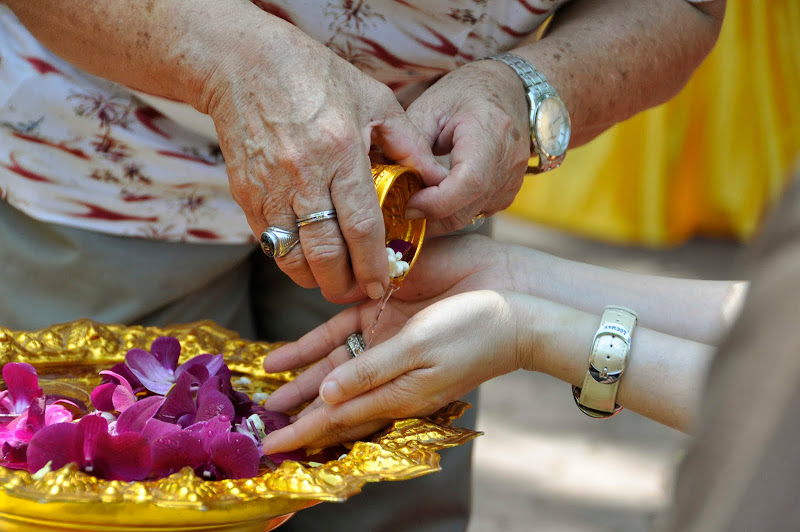From July 19 to August 2 this year, I joined 14 other fellow media students for overseas reporting in Phang Nga, Southern Thailand. The trip is part of a module called Going Overseas for Advanced Reporting (GO-FAR) and its funded by the Wee Kim Wee Legacy Fund. I also took the opportunity to snap some pictures :)
Mok (centre) plays hopscotch at an orphange in Phang Nga, Thailand. She and her friends at the orphanage are survivors from the 2004 Asian tsunami which killed thousands of people on Thailand's west coast.
A ship and a car share parking space in Baan Nam Khem. The 2004 tsunami had flung dozens of ships deep inland. Today, they serve as a memorial to a horrific past.
Raof, a Burmese worker on board a Thai trawler, passes a barrel to a fellow worker on a trawler at Kuraburi port, Thailand. The 38-year-old fled Burma after the failure of the 1988 pro-democracy protests. He came to Thailand in 2005 and has been surviving on border passes as a form of identification.
Burmese workers untangle fishing nets as their trawler prepares to leave Thaplamu pier in Phang Nga province, Thailand. Many Burmese work on Thai trawlers, spending about ten to 15 days a month on sea.
Wan Kankaew, 29, owns a commercial trawler and four longtail boats. Most of his workers are Burmese and they are a mix of registered and illegal workers. He complains that many Burmese run away after getting their work permit and its really difficult to keep his entire crew registered.
Pristine mangrove forests line the shore near Kuraburi port in Thailand. Mangrove forests are home to a rich variety of marine life. Once popular sites for logging and charcoal making, these mangroves are protected by Thai law today.
Manat Onsuwan lived in Baan Kanim village as a fisherman. During the monsoon period, the 47-year-old would fish for crabs in the safety of the mangrove forest. He fears that with the rise of commercial trawlers, traditional fishermen like him can no longer survive and fishing villages will disappear within his lifetime.
Hern Laokam is a retired dive fisherman from Baan Nam Khem. The former miner spent 15 years on the seas but his 3 children, drawn to jobs in the modernizing Thai economy, are unwilling to inherit his trade.
Montana, Smith River, Summer 2023.
1 year ago











